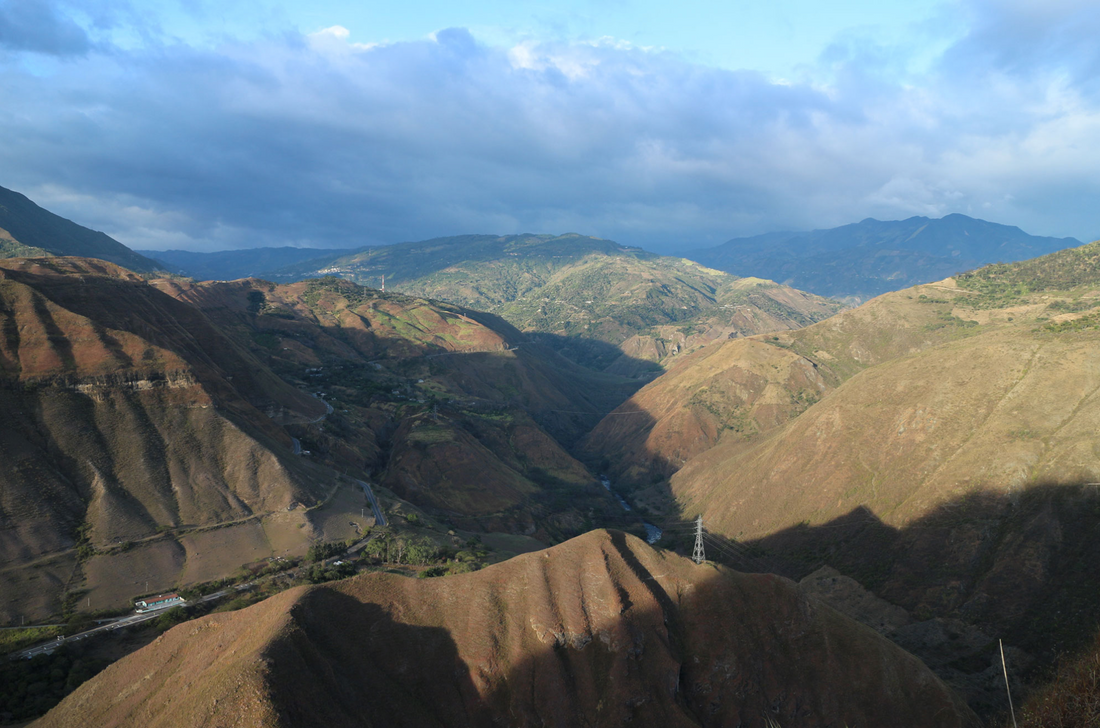==split_content==

==split_content==
Region. Narino
Varietal. Caturra
Altitude. 1800 - 2200 MASL
Processing. Washed
Black Berry, Mandarin, Grape, Brown Sugar
Background
This coffee was produced by six smallholder farmers from the area around the town of Buesaco in Eastern Nariño, Colombia. The contributing producers, like most in the region, own very small farms – averaging just 1.5 hectares in size – across an elevation of 1,800 – 2,200m above sea level. Surrounded by incredible native vegetation, the town of Buesaco is a stunning example of Nariño’s astonishing landscape.
Since the 2010s, Buesaco has transformed into one of Colombia’s best-regarded coffee-growing regions. In fact, many coffees grown here have performed exceptionally well in Colombia’s Cup of Excellence competition.

Ulpiano Rodriguez and his wife, two contributors to this delicious lot.
Buesaco is the traditional land of the Quillasingas, a people with a long and proud history of agriculture. While few of their population survived the brutal Spanish invasion of Nariño, their cultural heritage still lives on in the sustainable agricultural practices the region’s farmers employ.
Nariño is located in Southwest Colombia, bordering Ecuador. Coffee in Nariño is grown at elevations that reach 2,200 metres above sea level, making it some of highest grown coffee in the world.
Typically, it is very difficult to produce coffee at such high elevations (as many plants suffer from ‘die back’) – however, Nariño’s proximity to the equatorial line and steep hills around the volcanoes provide a great angle for sun exposure, creating the right micro-climate for coffee plants to thrive. The high elevation of cultivation, combined with warm tropical days and cool nights, allows for slow maturation and development of the coffee cherries, giving time for concentrated sugars to develop in the fruit and resulting in a very unique, sweet, and complex cup profile.
Nariño typically has a wet season with periods of continuous rain, followed by a dry season. Because of this, there is only one flowering period a year and, therefore, a single harvest, usually in April – July (this is different to other parts of Colombia where two harvests are the norm).

Process
The coffees in this lot were selectively hand-harvested, with most labour being provided by the farmers and their families. They were processed using the washed method at each farm’s ‘micro-beneficio’ (mill).
The coffee was pulped using a small manual or electric pulper, and then placed into a fermentation tank, where it was fermented for up to 36 hours (depending on the weather and the farms’ location) and then washed using cold, fresh water from surrounding streams. Then wet parchment was then graded by density in washing channels and washed again using clean water.
It was then carefully dried (over 10–18 days) on parabolic beds, which are constructed a bit like a ‘hoop house’ greenhouse, as these protect the coffee from the rain and prevent condensation from dripping back onto the drying beans. Luckily, Nariño is blessed with some of the best drying conditions in the country due to the micro-climate and high altitude of the region, providing lower relative humidity, more wind and more sunny days than other areas of the country.
Once dry, the coffee was delivered to Pergamino’s warehouse, where it was cupped and graded, and then rested in parchment until it was ready for export.

Coffee drying on the patio at Ulpiano’s Bella Vista farm.
Cheers,
The Skittle Lane Team
